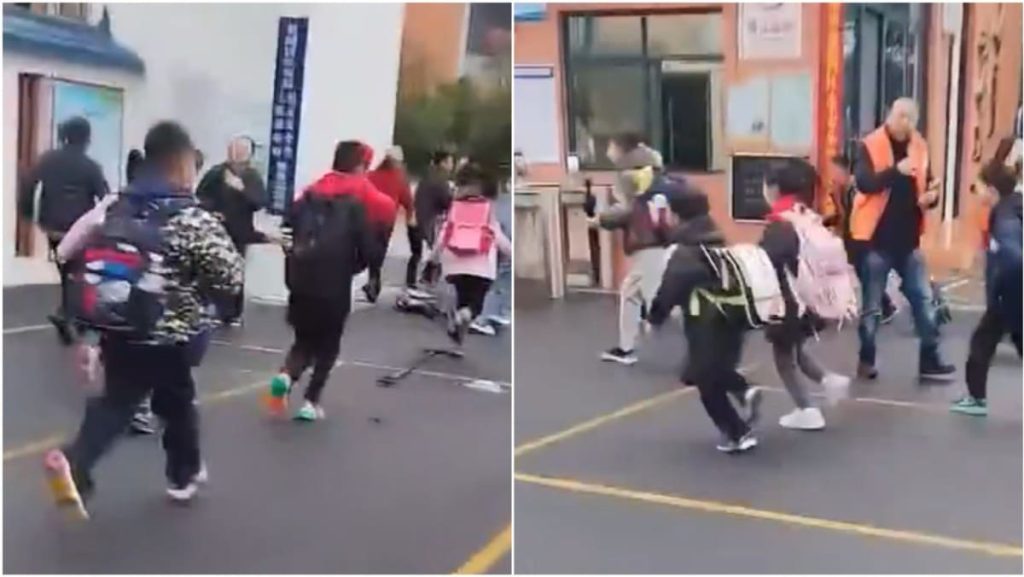The horrific incident in Huludao, China, where a driver intentionally plowed his SUV into a crowd of schoolchildren, killing one and injuring dozens more, has sparked widespread outrage and fear across the country. The driver, identified as Han Jinhua, was sentenced to death with a two-year reprieve, a sentence that can be commuted to life imprisonment after the two-year period. Chinese state media reported that Huang’s motive stemmed from personal grievances, including financial losses and family conflicts, leading him to “vent his emotions” in this devastating act of violence. This explanation, however, has done little to assuage public anger, with many expressing disbelief and fear at what they perceive as a lenient sentence. Social media platforms have erupted with calls for harsher punishment, with many demanding immediate execution and expressing concerns about the potential release of Huang back into society. The incident has further fueled anxieties about public safety in China, coming amidst a series of similar mass casualty events.
The Huludao attack joins a disturbing pattern of violence in China, marked by a surge in mass casualty incidents involving vehicles and knives. These incidents, seemingly random and driven by individual grievances, have shaken public confidence in the country’s traditionally robust security apparatus. The footage circulating online, depicting the chaotic aftermath of the Huludao attack, including panicked children fleeing the scene and the bloodied driver being apprehended by bystanders, has only amplified the sense of fear and vulnerability. The visceral nature of these attacks, often targeting vulnerable populations like schoolchildren, has struck a nerve within Chinese society, prompting calls for increased security measures and a deeper examination of the underlying social and economic factors that may be contributing to this disturbing trend.
The public outcry over the Huludao attack and the perceived leniency of the sentence reflects a growing sense of unease and dissatisfaction within Chinese society. Many believe the sentence fails to adequately address the gravity of the crime and the immense suffering it has caused. The calls for harsher punishment also highlight a desire for swift and decisive justice, a sentiment often expressed in the aftermath of such traumatic events. This public reaction underscores a broader concern about the effectiveness of the legal system in addressing violent crime and ensuring public safety. The fear expressed by many online commentators about the possibility of Huang’s eventual release underscores the deep psychological impact of these incidents and the lingering anxiety they create within communities.
The recent spate of mass casualty incidents, including the Huludao attack, has prompted some analysts to link these acts of violence to underlying social and economic pressures. China’s slowing economy, coupled with widening social inequalities, has created a breeding ground for frustration and resentment. Some argue that these economic anxieties, combined with personal grievances, can lead individuals to lash out in acts of desperation and violence. The Huludao attack, attributed to financial losses and family disputes, appears to fit this pattern, suggesting that individual struggles can boil over into public acts of aggression. This interpretation highlights the complex interplay between personal circumstances and broader societal factors in shaping individual behavior and underscores the need to address the root causes of social unrest.
The November 2023 attack in Zhuhai, where a driver deliberately rammed his car into a crowd, killing 35 and injuring over 40, stands as the deadliest such incident in China in a decade. This attack, along with the knife attack in Yixing that same month, which resulted in eight deaths and 17 injuries, further illustrates the alarming trend of mass violence in the country. These incidents, occurring within close proximity, heightened public concern and prompted calls for greater vigilance and security measures. The Zhuhai attack, in particular, due to its scale and brutality, served as a stark reminder of the devastating consequences of such violence and the vulnerability of public spaces.
The string of mass casualty incidents in China has challenged the country’s long-held reputation for maintaining strict social control and ensuring public safety. These events have exposed potential vulnerabilities in the security apparatus and raised questions about the effectiveness of existing measures to prevent such attacks. The public outcry and demands for stricter penalties reflect a growing demand for greater accountability and a more robust response to the threat of violence. The government faces the challenge of balancing the need for swift and decisive action with the principles of due process and the rule of law. The Huludao incident and the broader trend of mass violence have forced a national conversation about the underlying causes of these attacks and the measures needed to address them, both in terms of security enhancements and addressing the broader societal factors that contribute to such acts of desperation.

